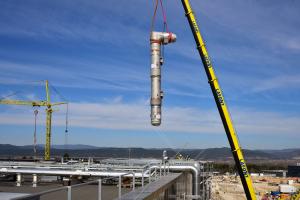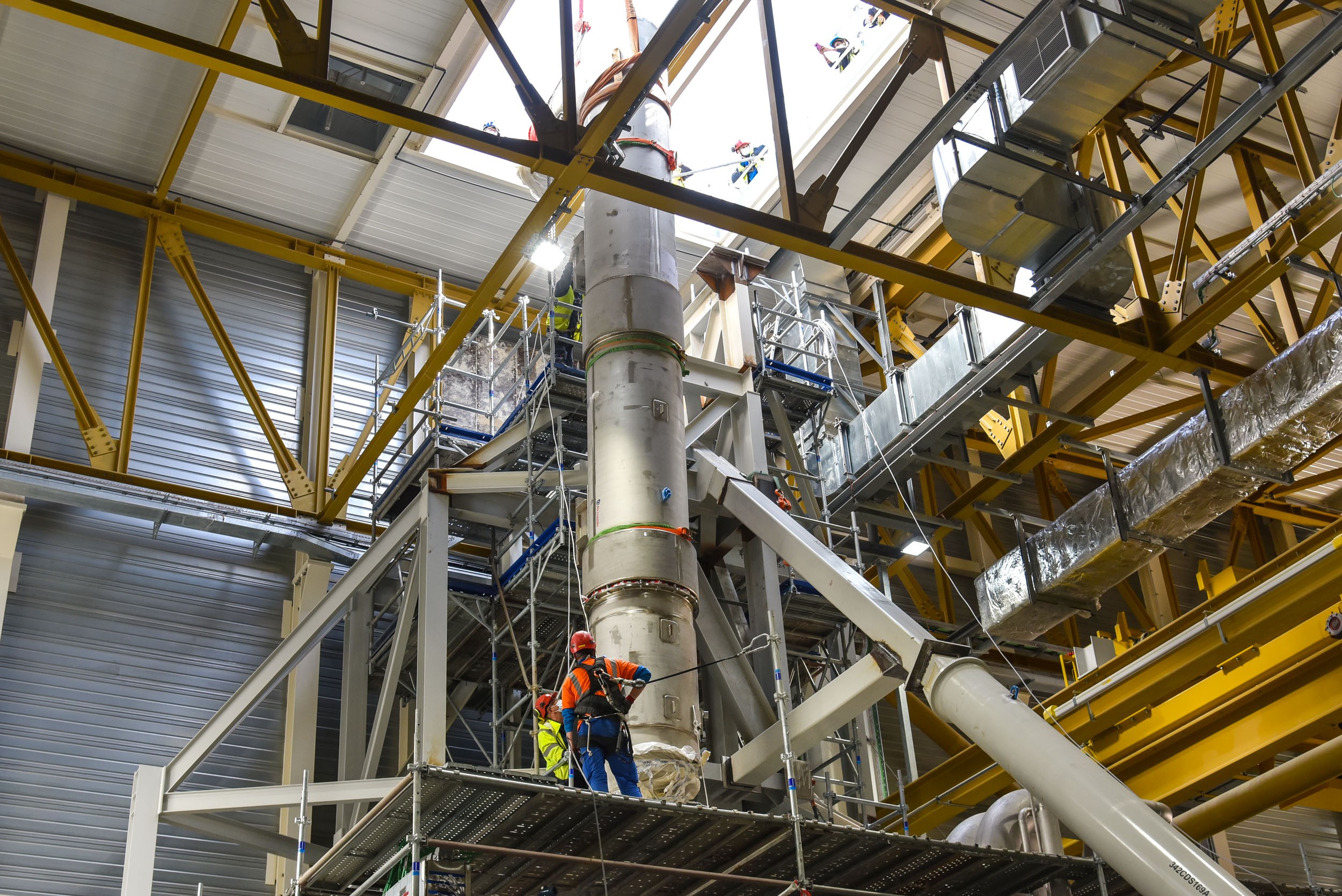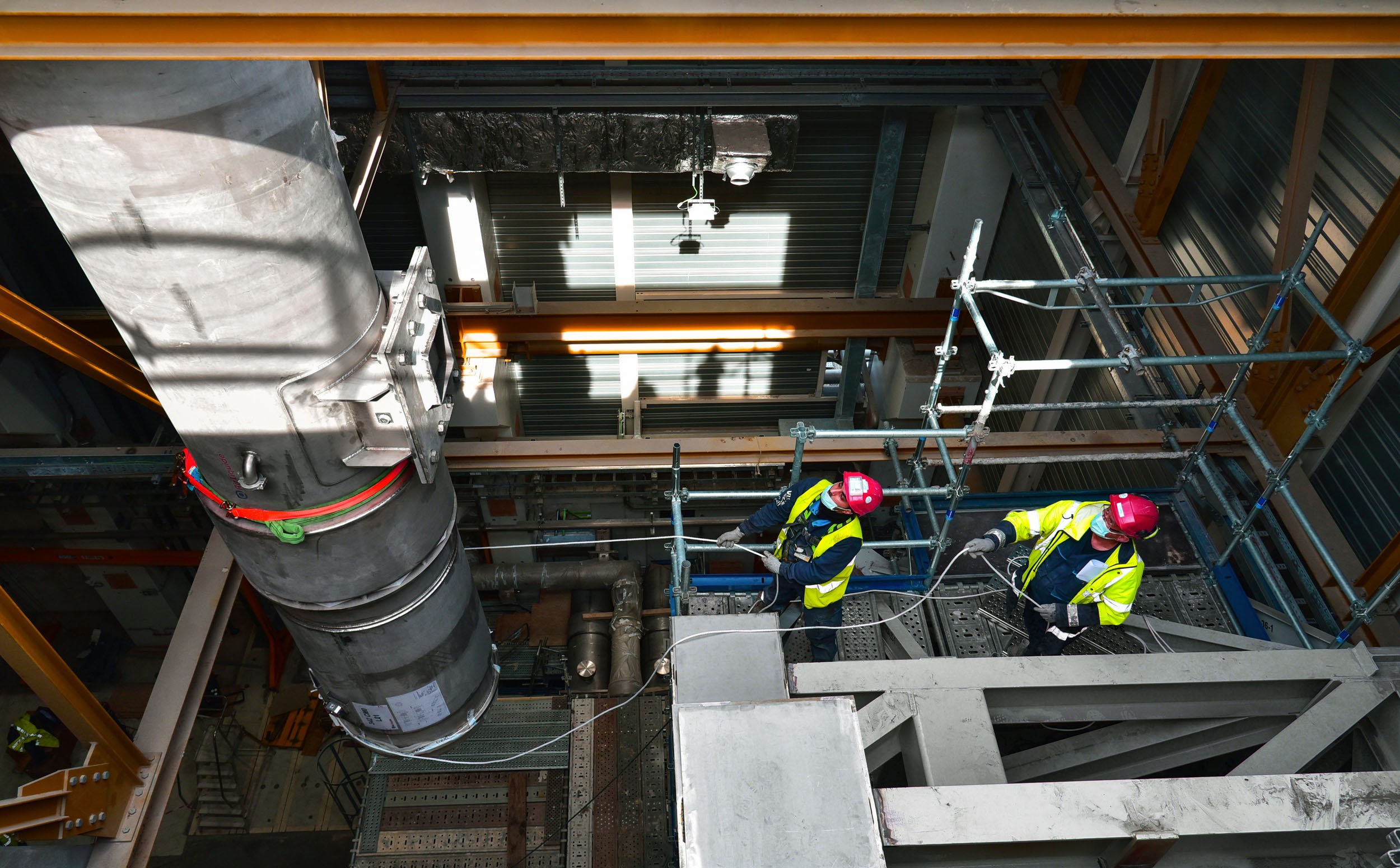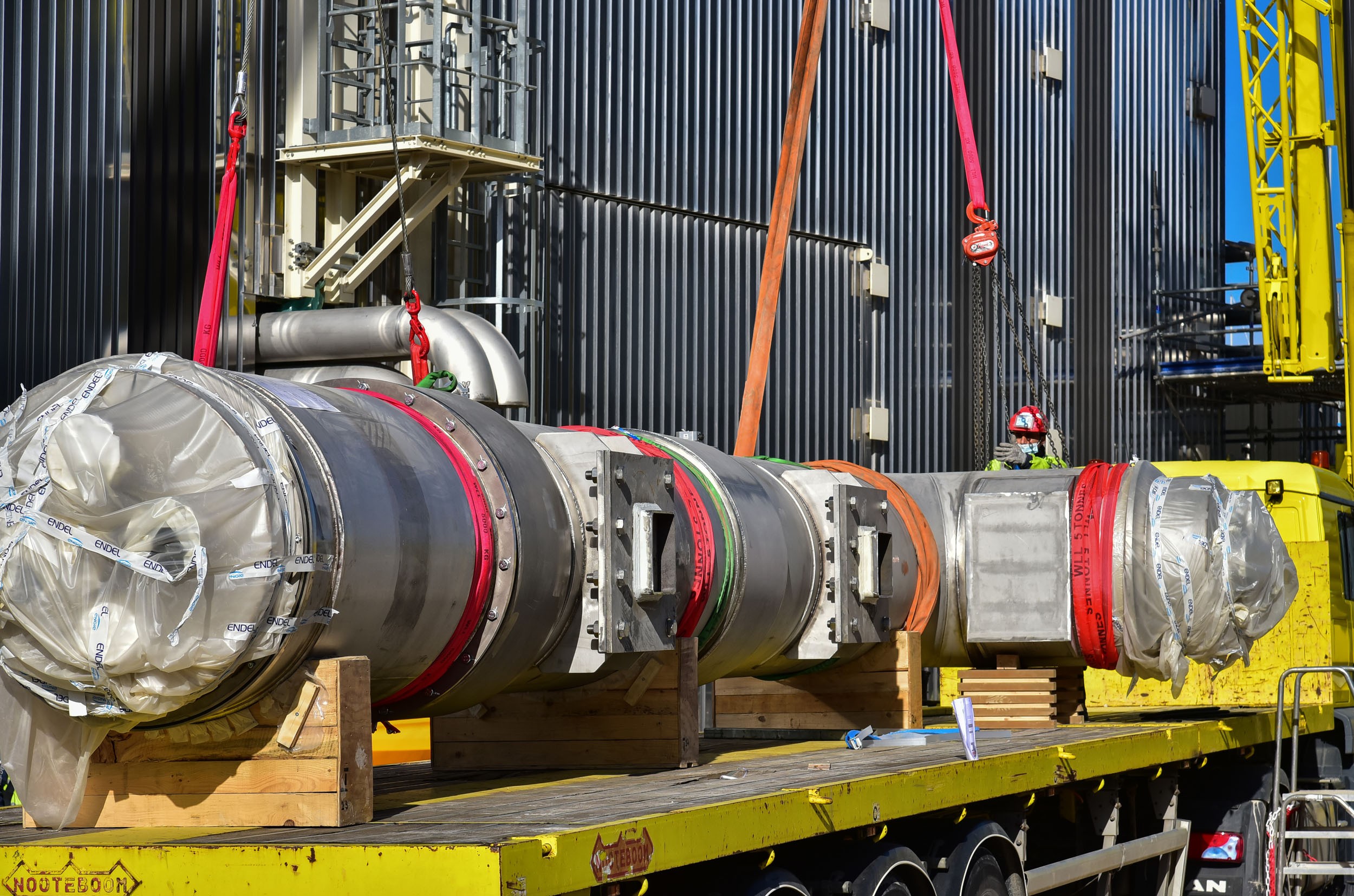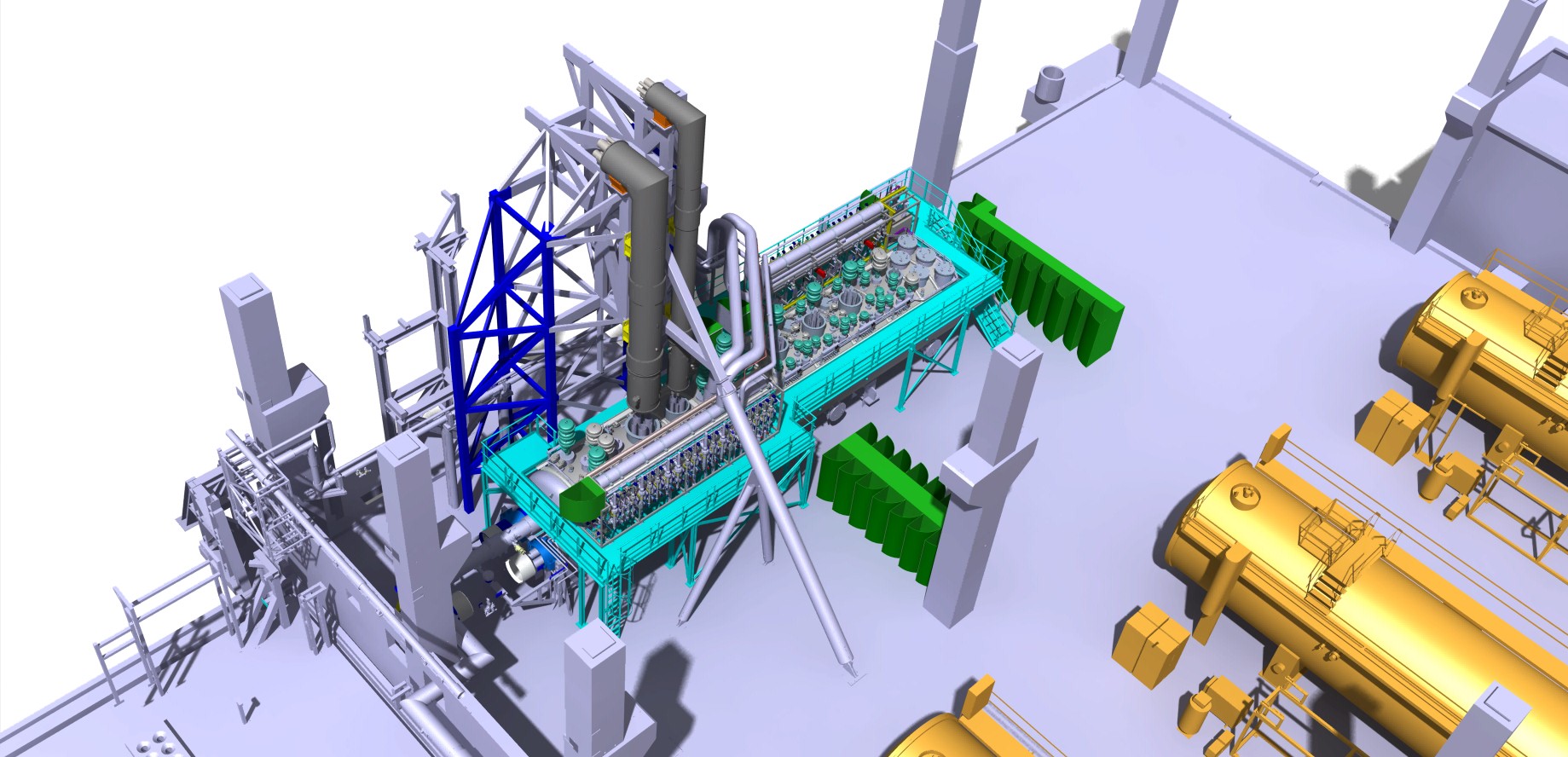Out through the door, in through the roof
Cryolines are not just pipes. Their innards comprise sensitive components, such as epoxy supports, that can only tolerate a certain level of acceleration during transport and lift. As a consequence, the operation on Thursday felt like an exercise in slow-motion, with operators checking the shock-recorder signals at every stage of the move.
The first component to go out and in again was a 12-metre-long, 1-metre-in-diameter, 6-tonne spool tasked with delivering helium at 4.7K (minus 269 °C) to the magnets. The second, slightly shorter, thinner and lighter cryoline is destined for the cryopumps, also cooled in the same temperature range.
Procured by India, both spools were manufactured by Air Liquide Advanced Technologies near Grenoble, France. Delivered in December 2020, they went through a lengthy process of interconnection welding, radiologic testing, helium leak tests, multi-layer insulation wrapping and outer vacuum jacket closure.
The two spools are the first elements of the future link between the cryoplant and the Tokamak Building. Vertically connected to the plant's termination cold box, which acts as a dispatcher for the cooling fluids, they bend at a 90° angle when they reach the roof in order to align with the future bridge that will span the distance between the two buildings.
The lifting of the two cryolines spools was perhaps not the most spectacular of the week (see here). But it was a complex and delicate operation that was perfectly executed by the Endel Cryolines Consortium, ORYS, CRYO DIFFUSION and crane operator Lafont.

